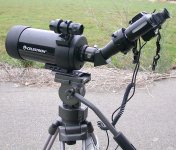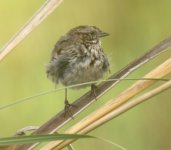geordiebeginner
Well-known member
I am looking for a budget scope to try digiscoping with my Nikon D50 DSLR attached via a T2 adapter.
I am looking at the Hawke Nature Trek 20-60 x 80 as it looks like about the best in my budget.
My questions are: When looking through the viewfinder of the Nikon (there is no live view facility on the rear screen) how bright will the image be-I am thinking of focusing etc.
And secondly: is it best to shoot in JPEG format or RAW and make the adjustments in photoshop?
I am looking at the Hawke Nature Trek 20-60 x 80 as it looks like about the best in my budget.
My questions are: When looking through the viewfinder of the Nikon (there is no live view facility on the rear screen) how bright will the image be-I am thinking of focusing etc.
And secondly: is it best to shoot in JPEG format or RAW and make the adjustments in photoshop?





